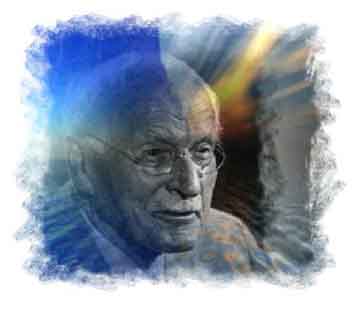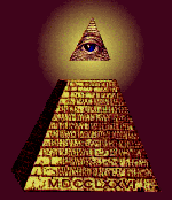
In 1944 Jung published Psychology and Alchemy in which he argues for a reevaluation of the symbolism of Alchemy as being intimately related to the psychoanalytical process. Using a cycle of dreams of one of his patients he shows how the symbols used by the Alchemists occur in the psyche as part of the reservoir of mythological images drawn upon by the individual in their dream states. Jung draws an analogy between the Great Work of the Alchemists and the process of reintegration and individuation of the psyche in the modern psychiatric patient.
Jung believed that the cosmos contained the divine light or life, but this essence was enmeshed in a mathematical trap, presided over by a demiurge, Lucifer, the Bringer of Light. Lucifer contained the light inside this reality, until a time when it would be set free. The first operation of alchemy therefore addressed itself to the dismemberment of this confining structure, reducing it to the condition of creative chaos. From this, in the process of transformation, the true, creative binaries emerge and begin their interaction designed to bring the alchemical union. In this ultimate union, says Jung, the previously confined light is redeemed and brought to the point of its ultimate and redemptive fulfillment.
Jung made it clear that his theory was not new. It is similar to the Catharism and he stated that he was restating the Hermetic Gnosis and explaining the misunderstood central quest of alchemy.
Jung believed that alchemy stood in a compensatory relationship to mainstream Christianity, rather like a dream does to the conscious attitudes of the dreamer. It has been has been hidden underground, part of a secret tradition that ran throughout Christianity, but always subconsciousness - visible by its shadows and the traces it leaves.
He also felt that this process allowed for better understanding of male-female relationships, and the concept of love. In the Psychology of Transference Jung stated that in love, as in psychological growth, the key to success is the ability to endure the tension of opposites without abandoning the process, even if its results appear to have been brought to naught. In essence, it is the stress that allows one to grow and transform.
The union of opposites, the focus of the alchemist, was for Jung also the focus of Gnostics, whom he felt had been incorrectly labeled as radical dualists, i.e. believing in the battle between good and evil without any apparent union possible between the two.
For Jung, dualism and monism were not mutually contradictory and exclusive, but complimentary aspects of reality. As such, there was no right and wrong, no order or chaos, just two opposites, duality, polarities, that created a means to reconciliation and balance into enlightenment.
In a maner of speaking one could call Carl Jung the Father if the New Age of Consciousness, giving a theoretical framework for channeling and other New Age practices that allow consciousness to expand outside the box of antiquated thinking.
In the end, Carl Jung stated that such opposites must be integrated. Zoroaster calls this Zero Point.
Jung believed in an Illuminated Psyche, which goes to the Illuminati, enlightenment through the Eye Symbology, All Seeing Eye and other major archetypes of the Masonic Program through which we experience and learn.


Ouroboros -- 2012
- The alchemists, who in their own way know more about the nature of the individuation process than we moderns do, expressed this paradox through the symbol of the ouroboros, the snake that eats its own tail. In the age old image of the ouroboros lies the thought of devouring oneself and turning oneself into a circulatory process, for it was clear to the most astute alchemists that the prima materia of the art was man himself. The ouroboros is a dramatic symbol for the integration and assimilation of the opposite, i.e. of the shadow self. This feed back process is at the same time a symbol of immortality, since it is said of the ouroboros that he slays himself and brings himself t life again, fertilizes himself and gives birth to himself. This is much like the cycle of the Phoenix, the feminine archetype. Ouroboros symbolizes The One, who proceeds from the clash of opposites, and therefore constitutes the secret of the prima materia which unquestionably stems from man's unconsciousness. (Collective Works Vol. 14)
No comments:
Post a Comment